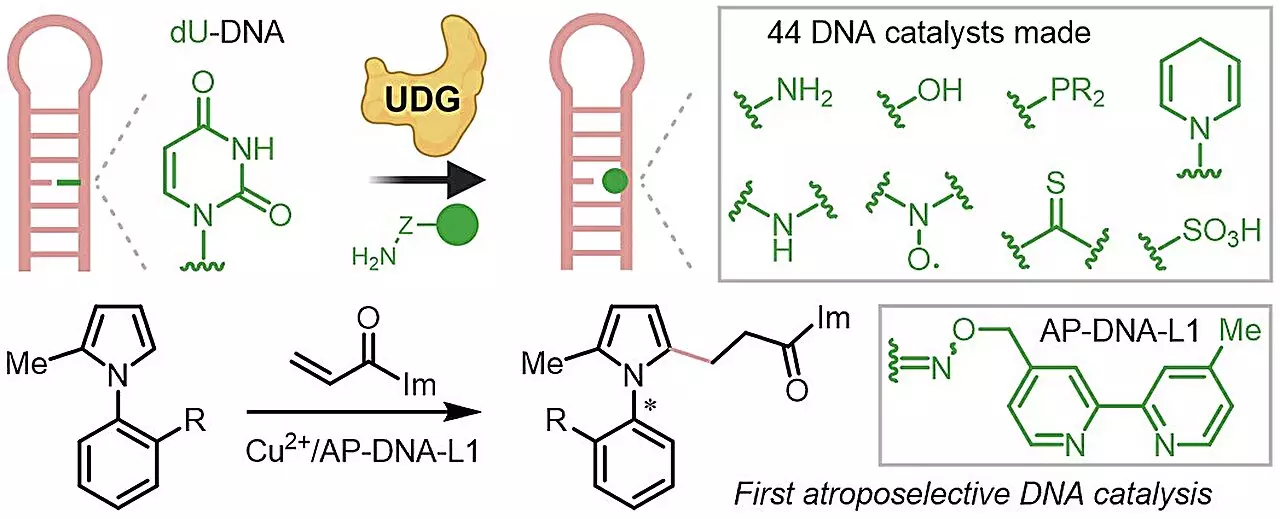Asymmetric catalysis is a vital area of modern chemistry, essential for the development of chiral molecules utilized in pharmaceuticals, agrochemicals, and various industrial applications. The ability to create these compounds efficiently and sustainably is becoming increasingly significant as the demand for such molecules rises. Recent research from the National University of Singapore (NUS) has opened exciting avenues in this field through the innovative use of deoxyribonucleic acid (DNA) as a source of chiral catalysts.
Traditional enzyme catalysis, relying heavily on biological proteins, presents several constraints. Although these proteins can speed up chemical reactions, their inherent instability often requires meticulous manipulation and design, which can be a significant hurdle in practical applications. Such limitations necessitate new methodologies that provide enhanced stability while maintaining high catalytic efficiency.
Researchers at NUS, led by Assistant Professor Zhu Ru-Yi, have progressed in alleviating these challenges by leveraging DNA’s unique properties. DNA’s ability to serve as a chiral scaffold offers a more robust and economically feasible solution. The innovative approach developed by the team involves merging DNA repair mechanisms with biorthogonal chemistry. This integration allows for the streamlined construction of chiral DNA catalysts that stand out for their versatility and operational simplicity. The approach enables individuals without specialized training or advanced laboratory equipment to engage in DNA catalysis, thus democratizing the technology.
Biorthogonal chemistry plays a crucial role in this advances, as it facilitates reactions that do not disrupt existing biological functions. This characteristic makes the method exceptionally adaptable, accommodating a wide array of functional groups without hindrance. This adaptability is paramount as it allows the creation of complex chiral molecules that would otherwise be difficult to synthesize. The resulting library of 44 distinct DNA catalysts serves as a testament to this innovative approach, demonstrating robust performance across various criteria, including enantioselectivity and substrate scope.
One of the most noteworthy accomplishments of this research is the team’s success in generating atroposelective DNA catalysts. This advancement marks a significant milestone, as it showcases the capability to synthesize axially chiral compounds—structures often deemed intricate and arduous to produce via typical biocatalytic pathways. The ability to assemble structurally diverse DNA catalysts implies that researchers can target a wide range of chemical reactions, enhancing efficiency and preciseness in synthetic organic chemistry.
The implications of these findings extend beyond mere academic interest. The NUS researchers are actively formulating novel strategies aimed at further refining selective and sustainable reactions using DNA-based catalysis. This continued pursuit signifies a commitment to transforming the landscape of chemical synthesis. As society increasingly prioritizes sustainability and cost-effectiveness, the potential for DNA catalysts to meet these needs cannot be overstated.
The innovative approach to utilizing DNA as chiral catalysts represents a significant leap forward in asymmetric catalysis. It not only addresses the challenges faced by traditional methods but also sets the stage for a more accessible and sustainable future in chemical research and industry.


Leave a Reply